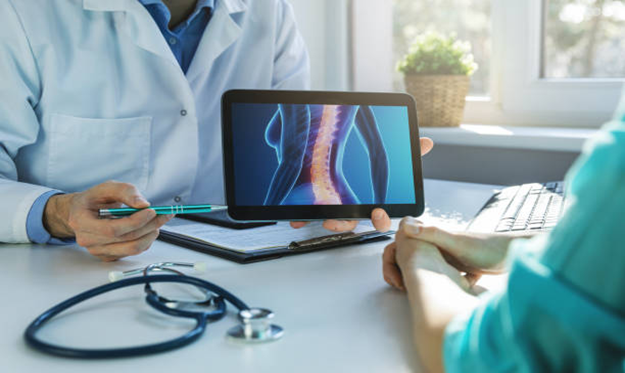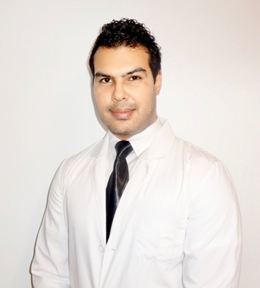
Back Pain Treatment in Mumbai
Says Dr. Gaurav Singra, a leading osteopath in Mumbai with extensive international training. His journey includes advanced education and practice in Canada, the UK, and Europe, giving him a unique perspective on treating back pain effectively.
Osteopathy, a crucial part of his approach, is a gentle, hands-on therapy designed to restore the body’s natural movement and function. By addressing the root causes of back pain—whether poor posture, injury, or chronic strain—osteopathy promotes lasting healing without medication or surgery.
Dr. Singra’s global experience and unmatched expertise make him a trusted name for back pain treatment in Mumbai. Using precise techniques, he focuses on restoring balance and mobility, ensuring your back is not only pain-free but strong and resilient for the future.
First, let’s uncover the triggers that might be causing back pain.
Common Causes of Back Pain
Back pain can stem from various reasons, and understanding the root cause is essential for effective treatment. Here are some common factors that may lead to back pain:
Poor Posture
Sitting for long hours, slouching, or improper alignment during activities can strain your back muscles and spine, causing persistent inflammation and micro-trauma over time, which causes the pain.
Muscle strain or injury
Heavy lifting, sudden movements, or overexertion during exercise can strain muscles or ligaments, resulting in the back pain.
Herniated or bulging discs
It occurs when the disc between your spinal vertebrae, which normally serve as cushions, slip or rupture, potentially pressing on nearby nerves and resulting in pain and discomfort.
Degenerative conditions
Conditions like arthritis or osteoporosis can weaken the bones and joints in your back, leading to chronic pain.
Sedentary lifestyle
A lack of regular physical activity can weaken the back muscles, making them more prone to strain leading to pain.
Stress and tension
Emotional stress can lead to muscle tightness, especially in the back and shoulders, which can contribute to discomfort and pain over time.
Now, let’s explore how a detailed examination and proper diagnosis can identify the underlying cause of your back pain and help to develop the best treatment plan.
Diagnosis for Back Pain

Accurate diagnosis is vital in treating back pain effectively. Dr. Gaurav Singra, a prominent back pain specialist in Mumbai, uses a thorough and patient-centered approach to uncover the root cause of your pain.
Detailed medical history
Dr. Singra starts by taking detailed medical history by looking at various factors such as patients’ background, lifestyle, and the nature of your pain like intensity, duration, quality of pain, along with aggravating and relieving factors.
Physical examination
A focused hands-on assessment helps to identify the areas of stiffness, muscle tension, or abnormal movement. This includes evaluating your posture, palpation, checking range of motion, and spinal alignment to identify potential issues.
Neurological assessment
If nerve involvement is suspected, reflexes, muscle strength, and sensory tests may be conducted to check for nerve compression or damage.
Imaging tests
Imaging tests like MRIs, CT scans, or X-rays may be recommended to examine your spine and nearby structures more thoroughly. These can detect problems like degenerative changes, fractures, muscle and ligament tear, nerve impingement, spinal stenosis or herniated discs.
Read on to explore effective treatments that can bring you lasting relief and restore mobility.
Back Pain Treatment Provided by Dr. Gaurav Singra
Osteopathic manipulative treatment (OMT)
This hands-on approach uses gentle techniques to improve spine alignment, relieve musculoskeletal tension, and restore normal movement. The treatment is effective for back pain caused by poor posture, muscle strain, or joint dysfunction.
Physical Therapy
Customized exercises and stretches help strengthen back muscles, improve flexibility, and prevent future injuries. This approach is ideal for managing chronic pain or recovering from injuries.
Bioflex Laser Therapy
This advanced, non-invasive laser therapy/photobiomodulation promotes tissue repair, reduces inflammation, and accelerates healing. It is especially beneficial for acute, chronic pain, swelling, sports injuries, ligament/tendon/muscle tear, arthritis, degenerative changes, disc herniation, and myofascitis.

Back pain treatments vary based on the severity and cause of your pain. Dr. Gaurav Singra, a highly experienced back pain doctor in Mumbai, provides a range of effective, non-invasive treatments to help you find relief and regain mobility.
Lifestyle Modifications
Dr. Singra emphasizes the importance of correcting posture, adopting ergonomic practices, and incorporating regular physical activity to support long-term back health.
Postural Training
Learning proper posture during sitting, standing, and lifting can significantly reduce strain on the back and prevent recurring pain.
Each treatment plan is customized to your health condition, ensuring effective and lasting relief. Whether you have a mild pain or severe discomfort, Dr. Singra’s expertise in back pain treatment in Mumbai provides solutions that work.

Find lasting relief from back pain—consult a trusted osteopath today.
Get to know an exceptional doctor for back pain in Mumbai who is dedicated to providing personalized care and lasting relief.
Dr. Gaurav Singra – Osteopath in Mumbai
Dr. Gaurav Singra is a highly qualified osteopath and pain specialist in Mumbai with extensive global training and experience. He holds an MBBS degree from
India, and advanced healthcare diploma and degree, including a DOMP from Canada, an MPH from the UK, and a Doctor of Osteopathy from Europe. Dr. Singra has also completed a fellowship in pain management at the Indian Academy of Orthopedic Surgeons (IAOS).
He specializes in treating musculoskeletal conditions, sports injuries, acute and chronic pain using non-invasive, patient-centered techniques. His holistic approach and advanced skills have earned him recognition as a trusted name in pain management and osteopathy.

Take a look at the common factors that contribute to back pain.
Risk factors associated with back pain
Back pain can affect anyone, but certain factors increase the likelihood of developing this condition. Recognizing these risk factors can help in prevention and early management:
Poor posture

Start your journey to a pain-free back—book a consultation with a back pain specialist today.
Effective Preventive Tips for Back Pain
Maintain good posture
Sit and stand upright with your shoulders relaxed and your back straight. When sitting for long periods, use a chair with proper lumbar support and frequently take a break and stretch.
Stay active
Regular physical activity strengthens back muscles and improves flexibility. Include exercises like walking, swimming, pilates, yoga or any sports activities you enjoy in your routine.
Lift properly
Lift heavy objects by bending your knees and keeping your back straight. Do not twist your back while carrying loads.
Maintain a healthy weight
Excessive weight can place unnecessary physical strain on the spine. Eating a balanced diet coupled with regular physical activity can help in maintaining healthy weight.

Create an ergonomic workspace
Set up your workstation to reduce strain. Ensure your computer screen is at eye level and your chair provides proper back support.
Do not stay seated for too long
Stand up, stretch, and walk around at regular intervals if you are sitting for extended periods.
Wear comfortable shoes
Opt for shoes with good arch support to reduce stress on your lower back. Avoid high heels for extended wear.
Sleep smart
Choose a firm mattress that supports your back. Sleep on your side or back, and avoid sleeping on your stomach.
Quit smoking
Smoking affects spinal health by reducing blood flow, limiting the oxygen to tissues, and increasing the risk of degenerative changes to the spine.
Manage stress
Practice relaxation techniques like meditation or deep breathing can reduce muscle tension and maintain long-term spinal health.
Why Choose Us
Preventing back pain is easier than treating it. Follow these simple yet effective tips to keep your back healthy and strong:
Exceptional expertise: Dr. Gaurav Singra is a globally trained osteopath with extensive international experience in pain management.
Personalized treatment plans: He designs solutions tailored to your back pain needs.
Non-invasive care: Safe and effective techniques for relief without medication or surgery.
Advanced technology: Access to cutting-edge therapies like Bioflex laser therapy for faster healing.
Holistic approach: Focus on treating the root cause to ensure long-term recovery.
Trusted specialist: He is preferred by patients, including high-profile personalities, for consistent and proven results.

Struggling with back pain? Reclaim your life—consult a specialist today.
Are you wondering if your back pain is more than a strain? Read on to learn how to tell the difference.
How to differentiate a casual back pain from other symptoms of spine-related pain?
The table below will help you differentiate between casual back pain and more serious spine-related issues, allowing you to understand when to seek professional care.
| Feature | Casual Back Pain | Spine-Related Pain |
| Duration | A few days to a couple of weeks, improves with rest | Persistent pain lasting longer than a few weeks |
| Cause | Poor posture, muscle strain, lifting, long sitting | Herniated discs, spinal stenosis, degenerative conditions |
| Relief | Eases with movement, stretching, and over the counter pain relievers | Pain persists despite self-care or worsens with time |
| Location | Typically localized to the lower back | May radiate to legs, arms, or neck |
| Pain Intensity | Mild to moderate, usually manageable | Severe pain, sometimes accompanied by weakness or numbness |
| Additional Symptoms | None, or occasional stiffness | Numbness, tingling, weakness, or loss of mobility |
| When to Seek Help | If pain persists beyond a couple of weeks | If pain is severe, radiates, or affects mobility or bladder function |

